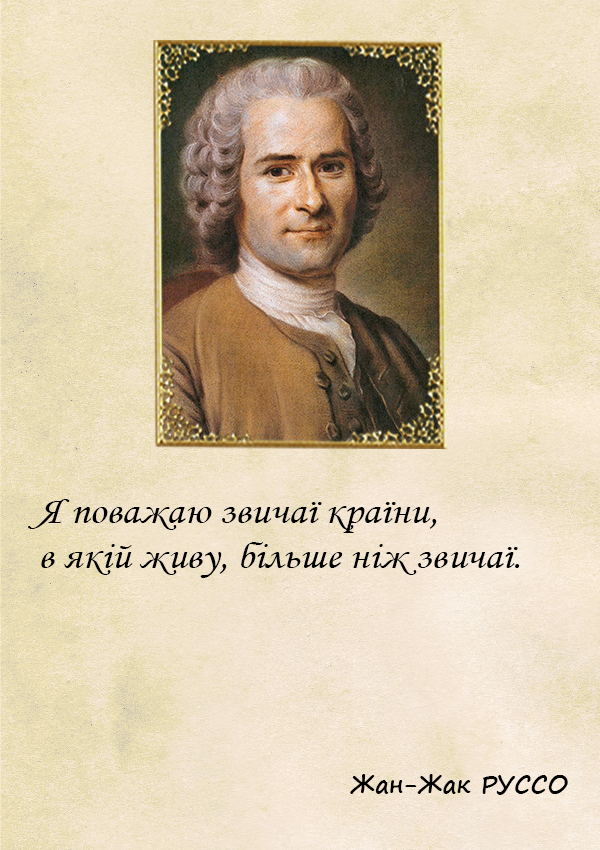-
Головне
-
СТОЛИЦЯ ВШАНУВАЛА ТВОРЦЯ СВОГО УНІВЕРСИТЕТУ
Київрада присвоїла посмертно звання «Почесний громадянин міста Києва» першому ректору -
Президент Трамп. «Золотий вік Америки»?
Дональд Трамп став 47-м президентом Сполучених Штатів -
З БІБЛІОТЕЧКОЮ І ЛЕКЦІЄЮ
У столичному Грінченковому університеті гостював Посол Японії.
-
-
Новини
-
ВОЄННИЙ Щоденник
-

Війна формату А4
Я працюю в поліграфії, там де друк. І звернула увагу, як невблаганно війна впливає на людські життя, як безжально й неочікувано Читати далі… -

День приїду,.. день від’їзду…
У квартирі надломлена тиша стоїть щоразу, коли він приїжджає додому. Дружина знімає з плити чайник, ніби робить щось надважливе, хоча просто Читати далі… -

Ціна правди
У столиці презентували документальний фільм «Звільнити слово». Про українських журналістів, звільнених з російського полону або тих, хто досі перебуває в неволі. Читати далі…
-
-
Життя
-

Сила тиші
Від початку великої війни вона особливо насторожує. Лякає не менш, аніж гучні звуки. Людина постійно прислухається. До всього навколо. У сусіда -

З укриттів – на свято
Нічний обстріл, ранок без води й електроенергії – за таких умов цього року відбувався щорічний благодійний різдвяний ярмарок «Charity Fair», організований -

Закуліссям безбар’єрності
Ми з мамою – справжні театралки. І Молодий театр Києва для нас майже як друга домівка – спосіб дихати, переживати, проживати,
-
-
Тема
-

Про історію – просто
Зі студентами та викладачами столичного Грінченкового університету спілкувався Олександр Алфьоров – голова Українського інституту національної пам’яті, кандидат історичних наук, майор ЗСУ -

Соцмережі пропаганди?
Цьогорічне дослідження звичок споживання новин у світі «Reuters Institute (Digital News Report 2025» констатує: на медійному ландшафті все активніше господарюють соцмережі. -

Освітні мігранти
За даними аналітичної платформи «VoxUkraine», кількість українських студентів у західних університетах збільшилася з приблизно 21 тисячі у 2008 році до понад
-
-
FICTION/OPINION COLUMN
-

Kherson Human Safari, Support the Initiative of Zarina Zabriski to launch a global campaign against Russian shelling and FPV drones using against civilians on December 13-14.
(opinion article) Kherson, the city of my youth and best memories, is suffering from the regular drone attacks and artillery shelling -

Zlata Ognevich in Bielefeld
(opinion article) September 27, 2025. In Bielefeld, a gentle and generous German city, an exciting and emotive event happened for the -

Charming She-Stock from Motherland
(opinion article) On September 30, 2025, in the German city of Bielefeld, a concert was held by the well-knowned Ukrainian singer
-
-
ФОТОБУК
-

ПІД ОБСТРІЛОМ
Грудень 15, 2025 -

ГАРНИЙ НАСТРІЙ
Грудень 09, 2025 -

«ПРОЩАЛЬНА МИТЬ. КРАМАТОРСЬК»
Грудень 08, 2025
-
-
СПОРТ
-

«Формула 1»: є тридцять п’ятий чемпіон!
Британський пілот Ландо Норріс уперше став переможцем чемпіонату світу «Формула-1» сезону-2025. Тридцять п’ятим за всю історію цих змагань. -

Нова надія українського тенісу
Цьогорічний чоловічий тенісний турнір ATP у французькому Меці подарував українському тенісу історію, про яку говорити будуть ще довго. Віталій Сачко, здійснив -

На кібервисоті
У другому етапі кіберспортивного чемпіонату «Starlabber Budapes Major 2025» , який приймав Будапешт, популярна гра «Counter-Strike 2» звела у поєдинкові українську
-
НАШІ ПАРТНЕРИ:








































Залишити відповідь